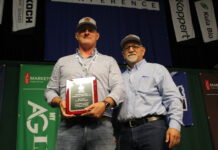Biostimulants…bio what??? You may have heard or read this phrase several times over the past year as this product category gains traction in the agricultural marketplace. Confused about what exactly constitutes a biostimulant? You are not the only one! A biostimulant includes “diverse substances and microorganisms that enhance plant growth” or helps “amend the soil structure, function, or performance.” Got it? No? That is ok, please read on for more information.
Market Confusion
The exact definition of what a biostimulant is, and what it is not, can be confusing and leave some folks scratching their head on what to expect regarding product performance (See Figure 1). A biostimulant tends to be an “environmentally friendly alternative to synthetic products” and can have multiple impacts on the crop or soil, although the exact definition of the category is vague and open-ended. This uncertainty has received increased attention by regulators, and we should expect to see more precise definitions soon.

As it stands, there are many active ingredients in this arena, and some growers have struggled to find the right fit for their farm. This confusion is regrettable given the increasing popularity of the category and the forecasted sales growth rates. For example, the global market for biostimulants was valued at $2.19 billion in 2018 and is projected to have a compound annual growth rate of 12.5% from 2019 to 2024.
Matching Clear Goals
Biostimulants can be derived from a laundry list of different materials, with studies listing roughly eight major classes of active ingredients or more, each with unique properties and modes of action. However, my experience in the field suggests that many of us have unfortunately lumped the various products in this category into one large “other” bucket for simplicity, regardless of the difference in how the product works or what outcome should be expected.
Below I help clarify the role of several active ingredients to allow you to better understand and also mix and match the desired characteristics you are looking for (See Table 1). This reference table will allow you to determine which features you want to put to work into your biostimulant blend based on your crop production method, application equipment, and comfort level. The biostimulant categories listed complement an agronomically sound fertilizer and irrigation program and should be included as a part of a comprehensive crop management program. Caveat: I do not have enough space to list all possible modes of action, but instead I limit the table to the materials that have an impact on the soil.

Understanding the Nuances
The biostimulant category offers many exciting opportunities to growers and can deliver new functionality to common fertilizers when used in a blend. Before jumping into this ‘other’ category, start with the following question “What features am I looking for?” This honest query will help you pick the correct ingredient needed and bring clarity to the nuances of the biostimulant category. Getting your product blend right from the get-go can help improve the soil on your farm and help jumpstart your 2020 yield and quality goals. Please consult with your local sales representatives to help pick the right active ingredient for the job and be sure to jar test any new blend ideas you have prior to tank mixing for compatibility concerns.
Furthermore, running a pilot or test study can be a great way to learn which biostimulant product is right for your crop and production system. Keeping good records of your observations will help jog your memory about product performance as the season wears on and will help you formulate the right blend for the job. A good pilot or trial plan can go a long way with helping you keep track of important information on how your biostimulant blend is impacting your crop.
Hungry for more information about biostimulants and what they can do for you? Many trade publications, such as the one you are reading now, have begun to cover this category in more detail and there are several good articles out there that are worth reading. Below I provided some recommended reading to help get you started along with some online resources that are worth a look.
About the Author
Dr. Karl Wyant currently serves as the Director of Ag Science at Heliae® Agriculture where he oversees the internal and external PhycoTerra® trials, assists with building regenerative agriculture implementation, and oversees agronomy training. Prior to Heliae® Agriculture, Dr. Wyant worked as a field agronomist for a major ag retailer serving the California and Arizona growing regions. To learn more about the future of soil health and regenerative agriculture, you can follow his webinar and blog series at PhycoTerra.com.
Further Resources
- Soil Health Partnership Blog – https://www.soilhealthpartnership.org/shp-blog/
- Soil Health Institute Blog – https://soilhealthinstitute.org/resources/
- PhycoTerra® Blog – https://phycoterra.com/blog/
References
Albrecht, Ute. (2019). Plant biostimulants: definition and overview of categories and effects. IFAS Extension HS1330.
Calvo Velez, Pamela & Nelson, Louise & Kloepper, Joseph. (2014). Agricultural uses of plant biostimulants. Plant and Soil. 383. 10.1007/s11104-014-2131-8.
Drobek, Magdalena & Frąc, Magdalena & Cybulska, Justyna. (2019). Plant Biostimulants: Importance of the Quality and Yield of Horticultural Crops and the Improvement of Plant Tolerance to Abiotic Stress—A Review. Agronomy. 9. 335. 10.3390/agronomy9060335.
Rouphael, Y., Colla, G., eds. (2020). Biostimulants in Agriculture. Lausanne: Frontiers Media SA. doi: 10.3389/978-2-88963-558-0




















